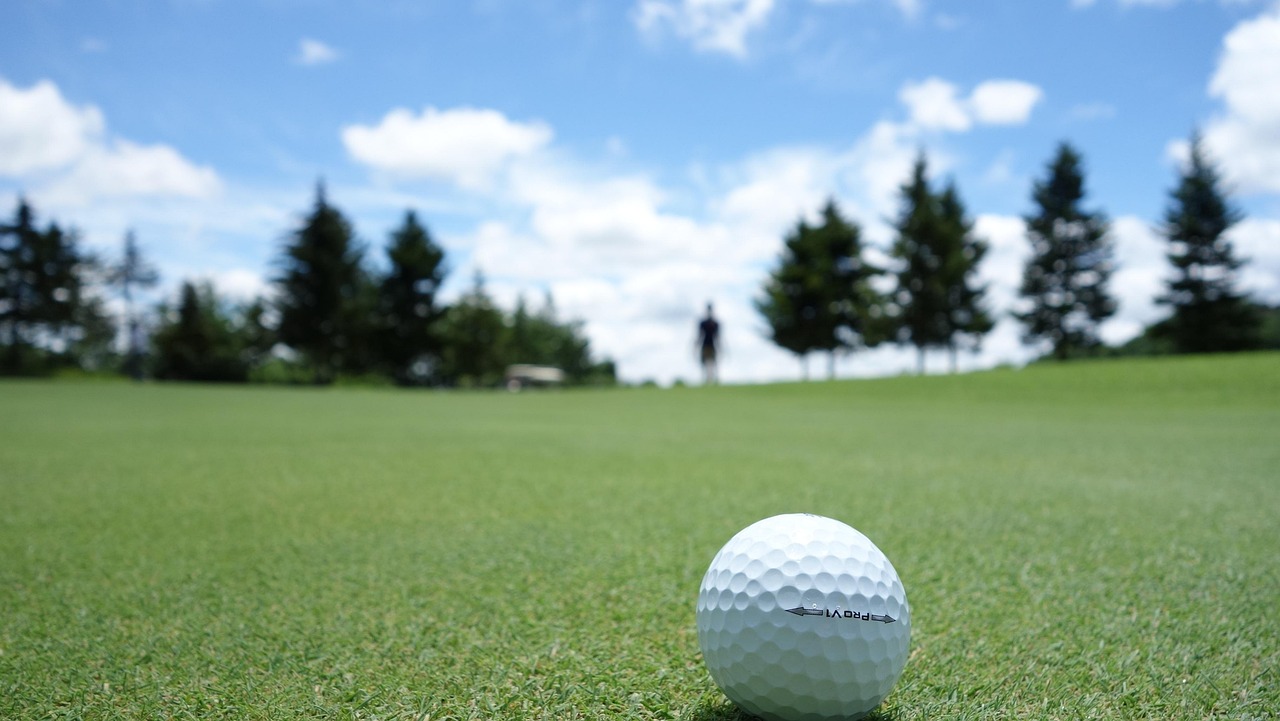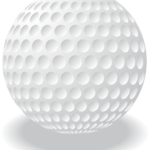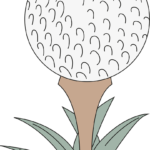Are you frustrated that your golf ball feels like it’s holding you back instead of helping you hit longer, straighter shots?
What Are The Best Golf Balls For Slower Swing Speeds?
You want a ball that maximizes distance, control, and feel at the swing speeds you actually have. This article helps you choose the right golf ball for slower swing speeds and explains why certain designs work better for you.
Who is considered a slower swing speed player?
A slower swing speed player typically generates driver speeds under about 85 mph. You may also see categories like very slow (<75 mph) and moderate-slow (75–85 mph). knowing your driver swing speed is the first step to choosing a ball that can help you get more distance better performance.< />>
Why ball selection matters for slower swing speeds
When your swing speed is lower, the golf ball needs to optimize launch angle and spin to convert energy efficiently into distance. The wrong ball can cost you distance, increase sidespin, and reduce feel around the greens. Choosing the right ball can make practice and play more satisfying and consistent.
How golf ball design affects players with slower swing speeds
Understanding ball construction, compression, spin, and launch will help you make an informed decision. Each factor influences how the ball performs for your speed and playing priorities.
Compression and what it means for your swing
Compression is a rating that indicates how much the ball deforms on impact. Lower-compression balls (e.g., 60–70) compress more easily and can help slower swingers achieve better energy transfer and higher launch. Higher-compression balls (90+) are designed for high swing speeds and can feel firmer to you. Choosing a lower-compression ball usually translates to more distance for slower swing speeds.
Layers: two-piece, three-piece, and multi-layer balls
Two-piece balls are generally firmer, more durable, and focused on distance with lower spin off the driver. Multi-layer balls (three-, four-, or five-piece) balance distance with feel and control around the greens. For slower swing speeds, a two-piece low-compression or a soft multi-layer ball with a low-compression core can be ideal depending on whether you prioritize pure distance or short-game control.
Core, mantle, and cover materials
The core controls energy transfer and compression; softer cores help slow swingers get more ball speed. Mantle layers (in multi-layer balls) influence spin ramp and feel. Covers—often Surlyn or urethane—affect spin and feel: Surlyn covers are durable and lower-spin, while urethane offers more spin and greenside control but may be less durable and a bit pricier. You’ll want to balance spin and durability based on what aspects of performance are more important to you.
Dimple pattern and aerodynamics
Dimple design influences lift and drag, which affects ball flight and stability. Many low-compression distance balls also employ dimple patterns that promote a higher, straighter trajectory to help compensate for slower swing speeds. If you struggle to get the ball airborne, look for balls marketed for high launch.

How to match ball characteristics to your priorities
Before picking a specific model, decide what matters most to you: distance, feel, control around the greens, or budget. Your priorities guide the best ball choices for your swing speed.
If distance is your top priority
You want a ball with a soft core and low compression that promotes a high launch and low spin off the driver. These balls are often two-piece or soft three-piece models and use aerodynamic designs to maximize carry. Prioritizing distance is sensible if you lose yardage off the tee or with long irons.
If feel and greenside control matter most
Choose a ball with a urethane cover and a softer core to keep spin for wedge shots and better feedback on short shots. Multi-layer urethane balls give more control around the green, but some models still offer low compression suitable for slower swing speeds. This is the right path if you value scoring and precision on approach shots.
If you want versatility (distance plus short-game spin)
A soft multi-layer urethane ball can give you both improved distance and decent control around the green. These are typically engineered to offer low driver spin and high wedge spin. They may cost more, but they can help you gain distance without sacrificing shotmaking ability.
If you’re on a budget or value durability
Two-piece Surlyn-covered balls are usually the most durable and affordable. They deliver solid distance and straight flight with minimal cost. While they offer less greenside spin, they’re a great option if you want a consistent, long-lasting ball that still suits slower speeds.
Recommended ball categories for slower swing speeds
Below is a practical breakdown of ball categories and the kind of players they suit. Each entry includes short reasons you might pick that category.
- Low-compression two-piece: Great for pure distance and durability. Choose this if you want straightforward distance gains at a low price.
- Soft multi-layer urethane: Best for players who want a blend of distance and control—soft feel, more greenside spin.
- High-launch/low-spin distance balls: Designed to help you get the ball in the air and reduce sidespin. Good if you struggle with launch or slice.
- Budget value balls: Perfect for practice and casual rounds where cost is a higher priority than maximum performance.

Top golf balls for slower swing speeds (recommended models)
Below is a selection of popular models that are frequently recommended for players with slower swing speeds. These are grouped by typical strengths so you can pick based on your needs.
| Ball Model | Compression / Feel | Strengths | Best For |
|---|---|---|---|
| Titleist Tour Soft | Low / Soft | Balanced feel, good greenside spin, consistent distance | Better feel + distance at modest speeds |
| Callaway Supersoft | Very low / Very soft | Extremely low compression, long carry, soft feel | Pure distance for very slow swingers |
| TaylorMade Soft Response | Low / Soft | High launch, soft feel, good straight flight | Players wanting forgiveness and distance |
| Srixon Soft Feel | Low / Soft | Soft feel, good distance, affordable | All-around option for slower swings |
| Bridgestone e6 / e12 (or recent equivalent) | Low–mid / Soft | Low spin, straighter flight, stable distance | Players who slice or want straighter ball flight |
| Titleist Velocity | Mid-low / Firmish | High launch, distance-oriented | Faster slow swingers who want max carry |
| Vice Pro Soft | Low / Soft | Urethane feel with lower compression | Players wanting soft feel with control |
| OnCore ELIXR / Avant (soft models) | Low / Soft | Designed for lower compression, good distance | Value-oriented players seeking performance |
Each model name above refers to a family of balls; manufacturers occasionally update lines, so check the latest version before buying.
Why these models work for slower swing speeds
Most of the models listed use a soft core to maximize ball speed at lower swing speeds and dimple/aerodynamic designs that encourage higher launch. Urethane models among them emphasize feel and spin while still providing low compression cores suited to slower swings.
How to test and validate a ball for your game
Testing on the range, on the course, and with data will get you the best match. Try several models under similar conditions and track carry, total distance, dispersion, and short-game performance.
Basic on-course testing routine
Buy a sleeve of 3–6 different balls and play multiple holes with each model. Note how often you get better distance, how the ball behaves on approach shots, and how it reacts around the green. Don’t judge based on a single shot—consistency matters.
Using a launch monitor
If you have access to a launch monitor or a fitting session, measure launch angle, ball speed, spin, and carry for each ball. Balls that give you higher ball speed and optimal launch/spin for your driver are typically the best for maximizing distance.
What metrics to prioritize
- Ball speed: Higher is better for distance.
- Launch angle: A slightly higher launch often benefits slower swingers.
- Spin rate: Lower driver spin helps with roll; higher wedge spin helps control.
- Carry and total distance: Compare these directly between balls to see differences.
- Dispersion: A straighter, more repeatable ball will reduce score variance.

Practical tips for choosing and using balls as a slower swinger
These actionable tips will help you get the most from your selected ball.
Don’t overcomplicate the choice
Start with balls designed for low compression and high launch, then refine based on feel and control. If you notice minimal differences, pick the most durable option to save money.
Match ball to tee shot intent
If you need max distance on the tee, choose a two-piece low-compression distance ball. If you’re playing a course where approach control matters more, prefer a soft urethane ball for more greenside spin.
Use different balls for practice vs. tournament play
You might use cheaper two-piece balls for practice to save money and play a softer urethane model in competitive rounds. This gives you consistent practice feedback while maximizing performance when it counts.
Keep ball compression in mind as your swing changes
If you increase your swing speed with practice or coaching, revisit your ball choice. As your speed rises into higher ranges, the ideal compression point may shift toward firmer balls.
Common mistakes slower swing speed players make
Avoid these frequent errors that can undermine performance regardless of the ball you choose.
Choosing high-compression balls
Higher-compression balls waste energy at lower swing speeds and make the ball feel too firm. If you’ve been using tour-firm balls, switching to low-compression models can yield instant gains.
Selecting a ball solely on brand or price
Brand prestige or price doesn’t guarantee the right performance for your swing. Focus on compression, launch characteristics, and how the ball performs for your swing metrics.
Not testing enough balls
Sticking to one brand without testing alternatives can leave distance and control on the table. Try several models in real conditions before settling.
Ball choices by specific swing speed bands
Here’s a concise guide for chosen speed ranges to make the decision process faster.
Very slow swing speed (<75 mph)< />3>
You need very low-compression balls that promote maximum carry and high launch. Look for “super soft” or low-compression distance balls. These will noticeably improve carry and reduce the feeling of a hard strike.
Slow swing speed (75–85 mph)
Low- to mid-low compression two-piece balls or soft urethane multi-layer balls suit this range well. You’ll benefit from a high launch and balanced spin characteristics to keep trajectory and control.
Borderline moderate (85–95 mph)
You can use low- to mid-compression urethane balls if you want more control without sacrificing distance. If you prioritize distance, a low-compression two-piece or distance-specific model is still effective.
How weather and course conditions affect your choice
Environmental factors change how a ball performs, and you should factor these into your selection.
Cold weather
In colder conditions, ball compression increases and distance shrinks. Softer balls that compress more easily help mitigate distance loss in chilly weather. Consider switching to a softer ball when temperature drops.
Windy conditions
If the wind is a factor, a lower-spin ball with a more penetrating trajectory can help you manage flight better. Some distance-focused low-spin balls reduce ballooning in windy conditions.
Wet or firm greens
On wet greens, extra spin may be less effective, so a durable two-piece ball that provides predictable stopping behavior might be preferred. On very firm greens, spin helps with check and control, so a urethane model can be advantageous.
Cost considerations and value
Ball prices vary widely; balance performance and cost for your needs. High-end urethane balls cost more but offer better short-game performance, while two-piece distance balls give great value for range sessions and casual rounds.
How many to buy
If you’re experimenting, buy sleeves (3 balls) of several models rather than full dozens. Once you find a ball that works consistently, consider buying in bulk to save money.
When to splurge
Spend more on balls when you need fine control and feel—tournament play or when your short-game precision is a priority. Otherwise, lower-cost distance balls are a great everyday option.
Quick comparison chart: Which ball to choose based on priority
| Priority | Recommended Ball Type | Example Models |
|---|---|---|
| Maximum distance, low cost | Two-piece low-compression | Callaway Supersoft, Srixon Soft Feel |
| Distance + soft feel | Soft multi-layer | Titleist Tour Soft, TaylorMade Soft Response |
| Greenside control + feel | Urethane multi-layer (soft) | Vice Pro Soft, Titleist Tour Soft (urethane versions) |
| Straight ball flight | Low-spin distance ball | Bridgestone e6/e12 series, TaylorMade distance models |
| Cold-weather performance | Very low compression | Callaway Supersoft, other super-soft balls |
FAQs
Will a low-compression ball increase my distance immediately?
Often you’ll see distance gains because low-compression balls compress more easily at slower speeds, converting more of your swing energy into ball speed. However, results vary by player and conditions, so testing is still necessary.
Do softer balls reduce my spin on wedge shots?
Not necessarily. Many modern soft urethane balls are designed to give high wedge spin while keeping driver spin low. The cover material and layer construction affect spin more than core softness alone.
Are cheap balls always worse for slower swing speeds?
Not always. Many affordable two-piece balls perform very well for distance and are designed with low compression. They may lack the premium feel or greenside spin of top-tier urethane balls but can be excellent value.
How long should I test a ball before deciding?
Play multiple holes (ideally several rounds) with each ball to assess consistency. Use a sleeve or a dozen across multiple sessions to see true performance under varying conditions.
Final checklist to pick the best ball for your slower swing speed
- Know your driver swing speed (use a launch monitor if possible).
- Prioritize what matters most: distance, feel, control, or cost.
- Choose a ball with low compression and a launch/spin profile that suits your needs.
- Test several models on-course and use a launch monitor if available.
- Consider weather and course conditions when choosing for a round.
- Buy sleeves for testing, then purchase in bulk if the ball performs well.
Closing thoughts
Choosing the right golf ball can produce measurable gains in distance, consistency, and scoring for slower swing speeds. By focusing on compression, launch characteristics, and your personal priorities, you’ll find a model that feels right and helps your game. Start with a few well-regarded low-compression options and refine your choice based on data and on-course feel—small changes in ball selection can deliver satisfying improvements to your performance and enjoyment of the game.








